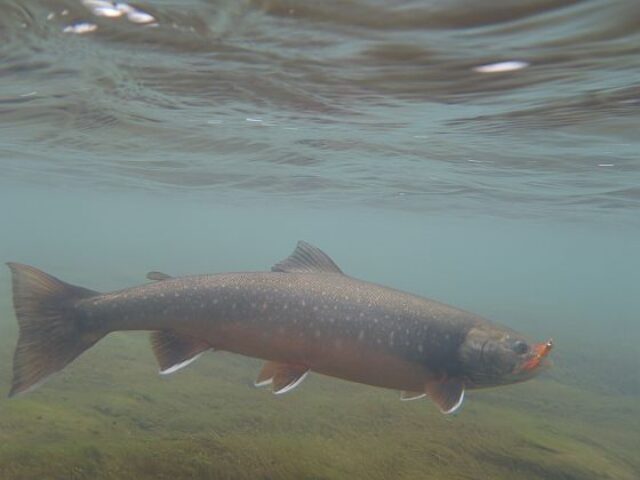There are around 340 separate Arctic charr populations in the British Isles and they are often described as ‘remnants of the ice age’ perhaps because of their association with the Arctic and the fact that they (along with other species including trout and grayling) populated our waters soon after the glaciers retreated around 12,000 years ago. They arrived as sea-run char, and then subsequently lost their sea migratory tendencies, becoming freshwater resident populations occupying mainly the deep lakes of Scotland, Ireland, North Wales and the Lake District.
Brown trout are genetically very diverse and show a wide range of local adaptations but variation between populations is even more pronounced in charr. They differ between lakes, but more strikingly, a number of individual lakes have been demonstrated to feature two, three or even four distinct populations living side by side. Such co-occurring populations often not only look very different in terms of size, shape and colour, but also have different feeding preferences and life histories and will occupy different areas within the lake.
The diversity of Arctic charr has led to extensive debate as to whether it should be considered one or several species, and this is an ongoing debate amongst scientists. However, what is clear is that the variation amongst charr populations makes the species of significant biodiversity and conservation value.
The parallels of Arctic charr with its cousin the brown trout in terms of biology, ecological diversity, their co-occurrence in many lakes, and pressures, which include climate change, eutrophication and competition from non native species render it of key interest to WTT. Also, charr form the main prey species of the apex predator, ferox trout and are therefore a key species of many of the lakes throughout its range.
This article by WTT Chairman, Dr David Fraser, discusses the studies undertaken by him and others on charr in Loch Rannoch and Loch Ericht in Scotland. Click here to view the article as a PDF.
Below is simply stunning video on work to support charr in Ennerdale — beautiful photography and great messages about the benefits of sorting the habitat for wild fish. In this case, work to ensure spawning streams are in good order and accessible to the charr appears to be reaping benefits.
